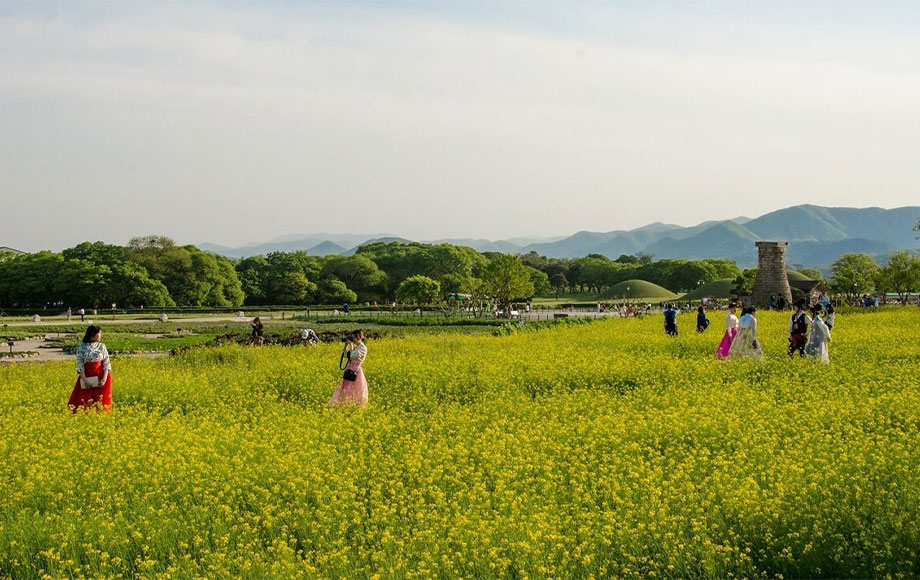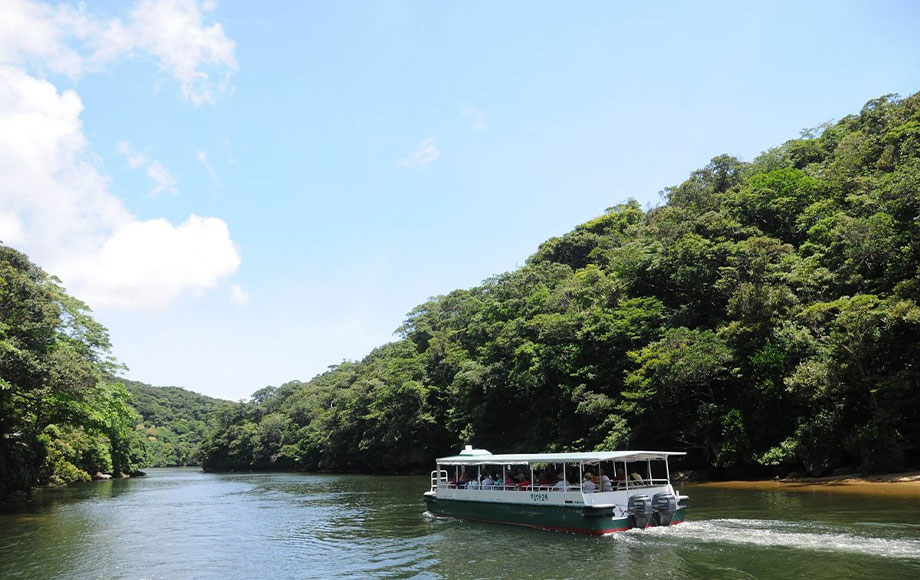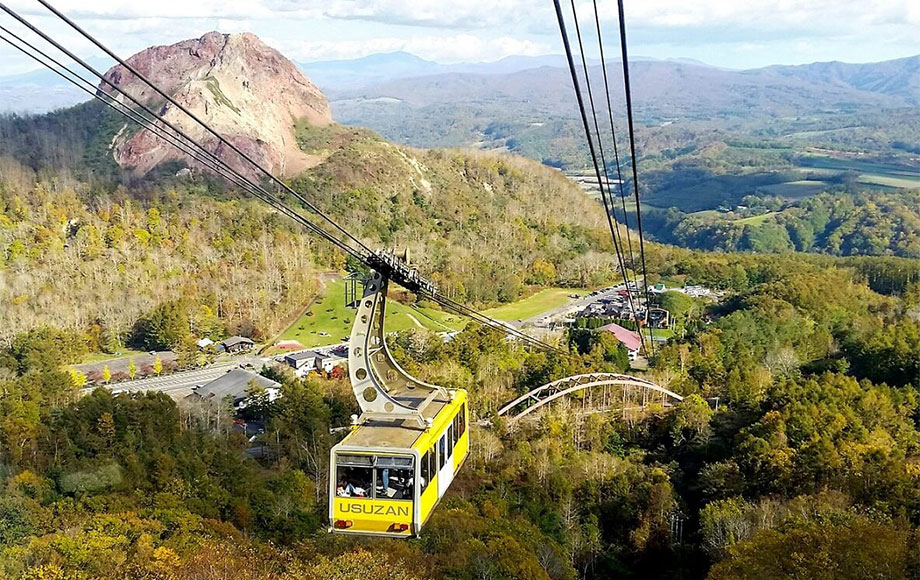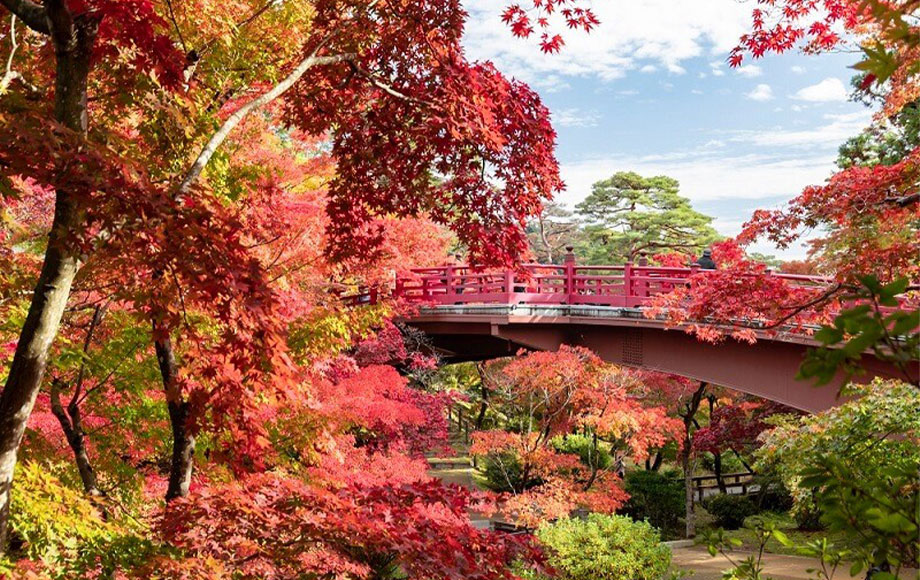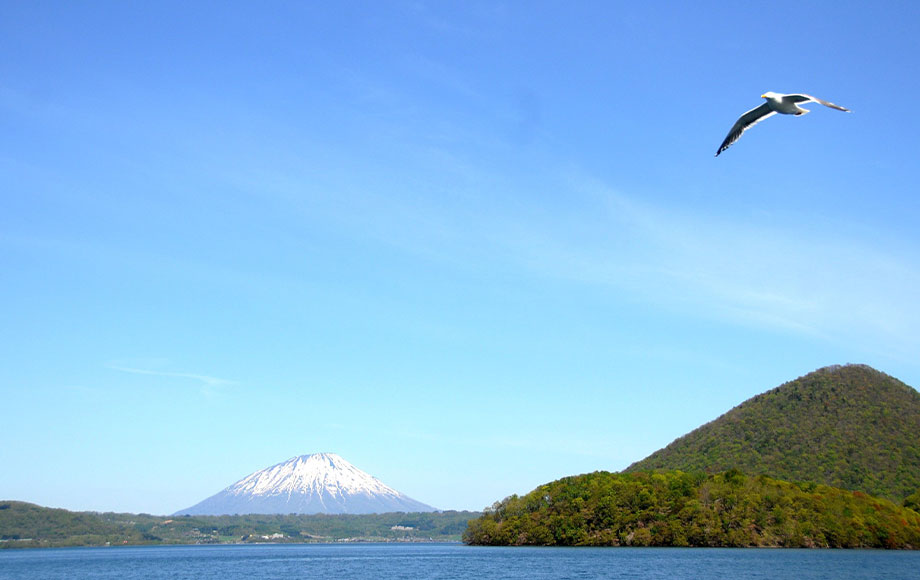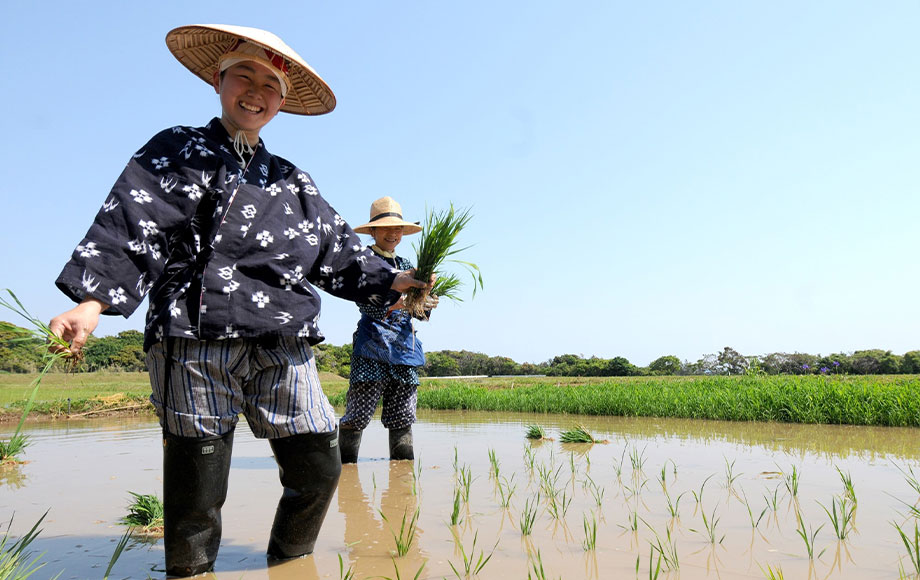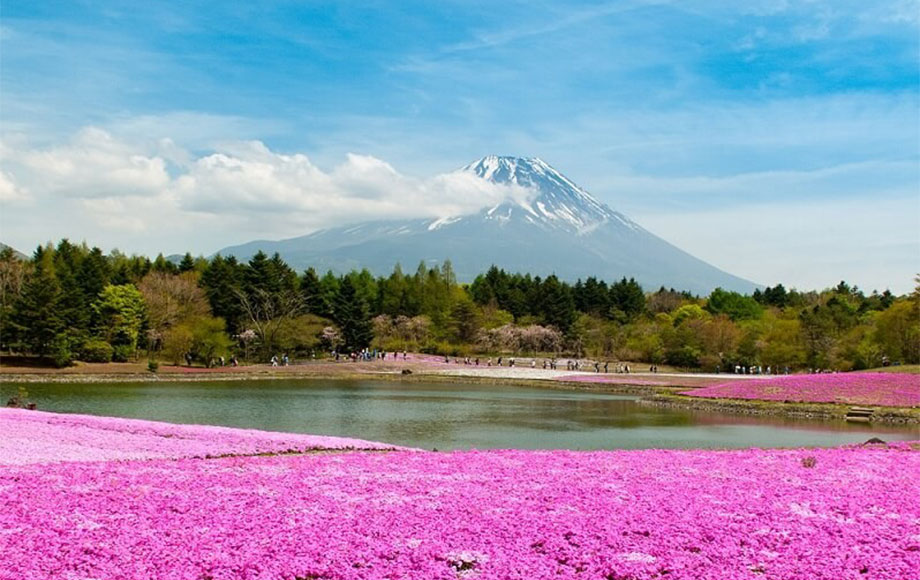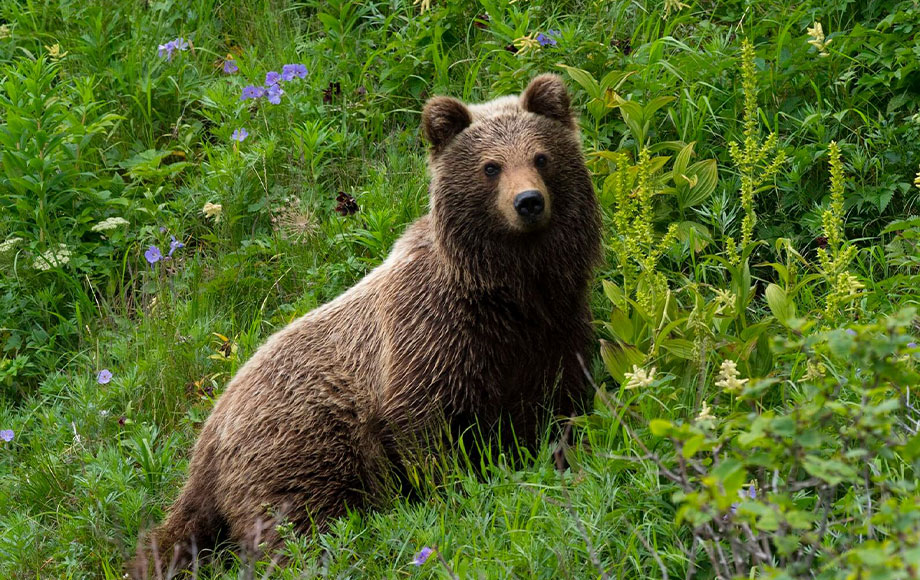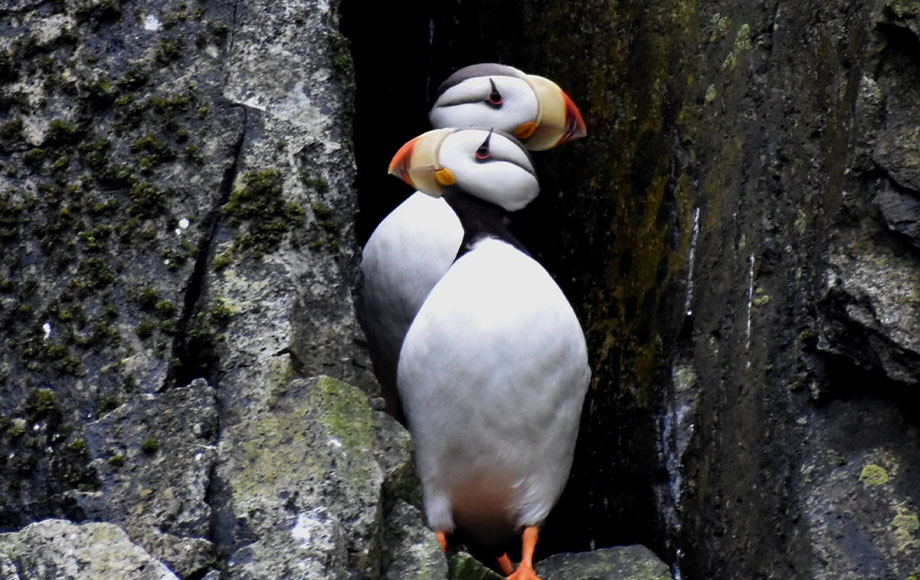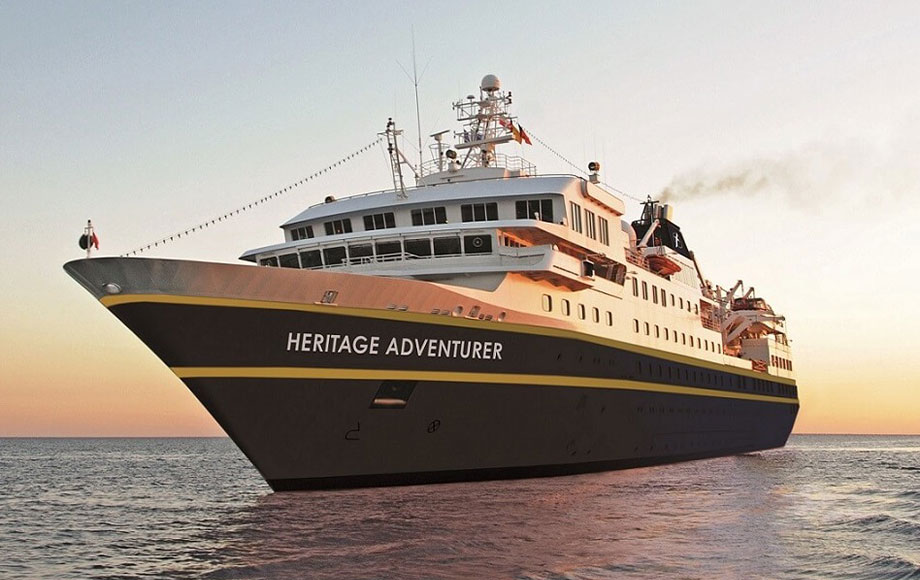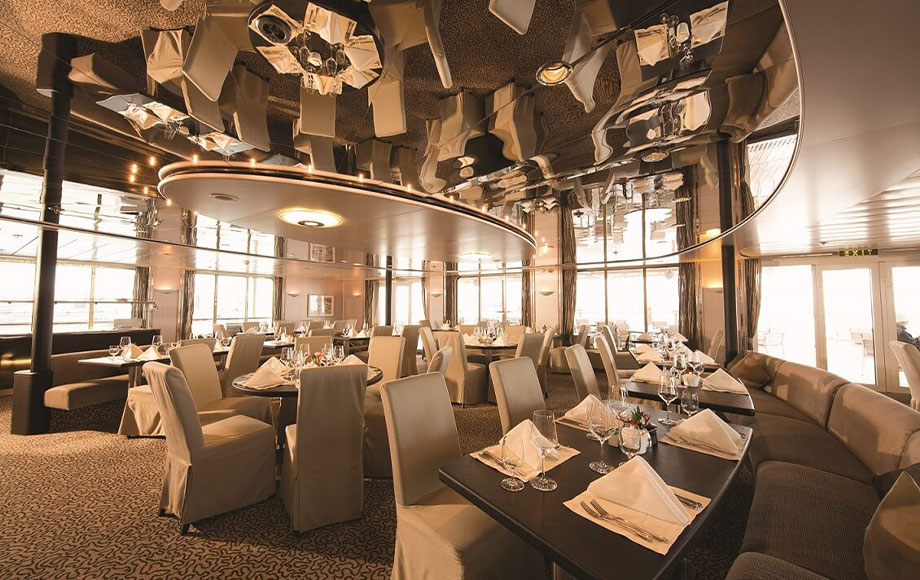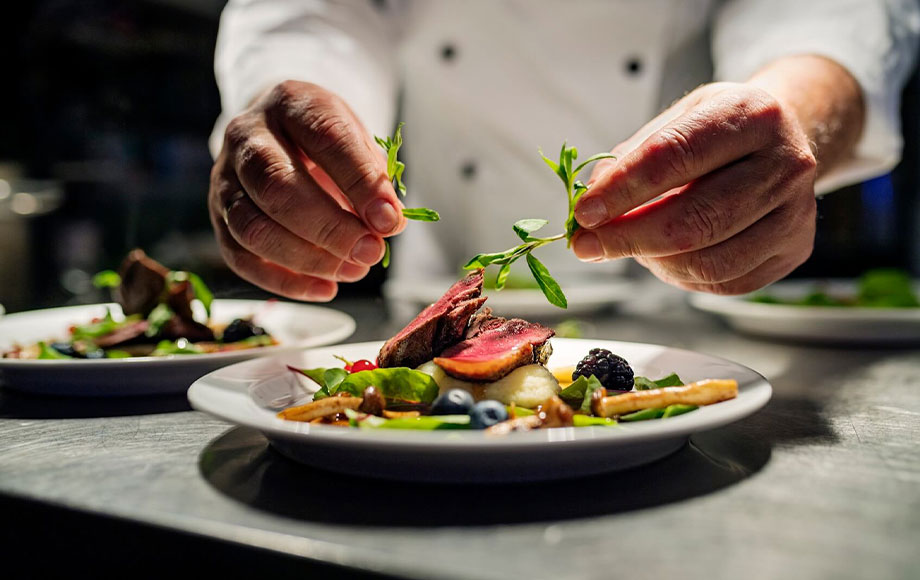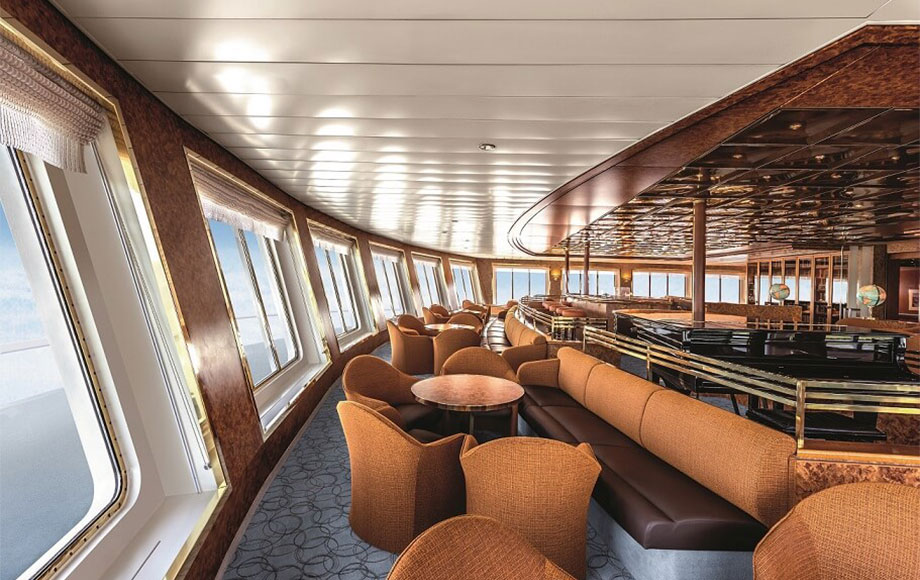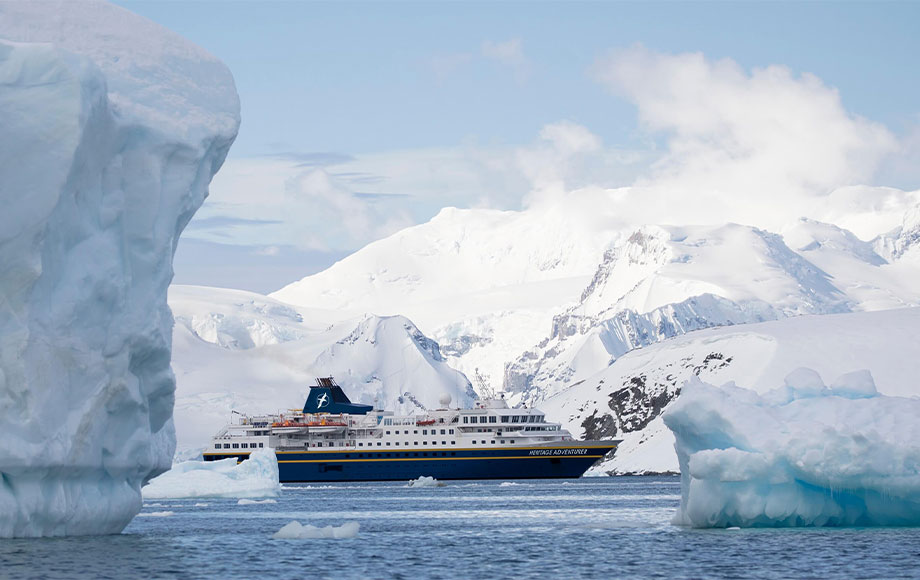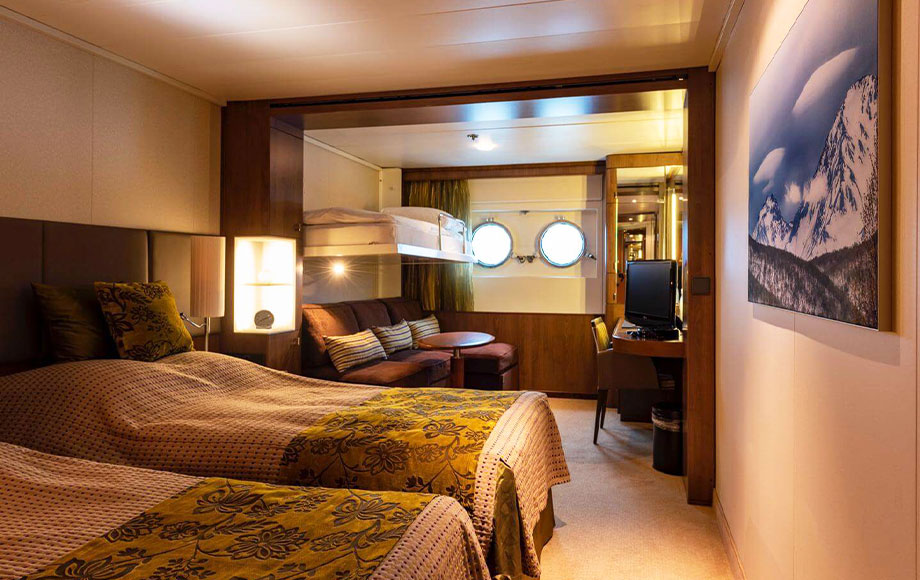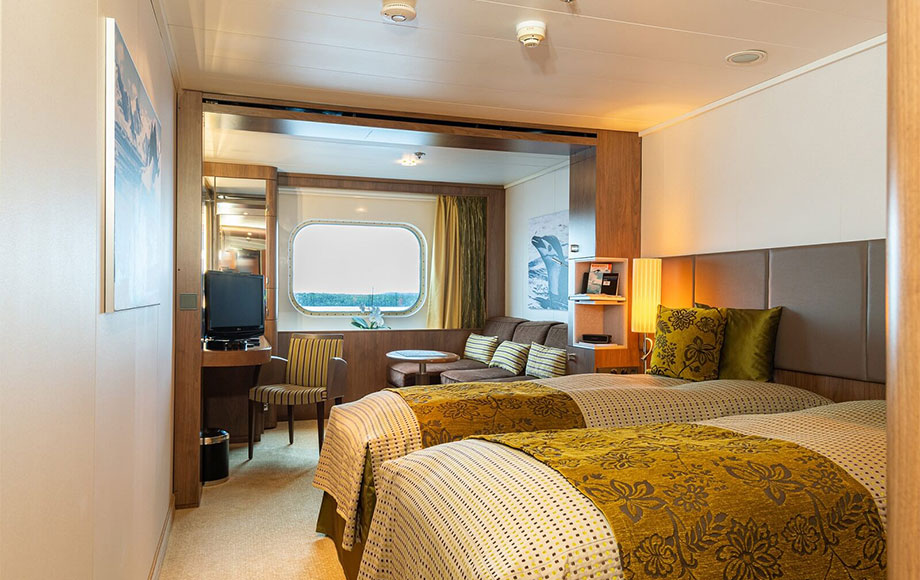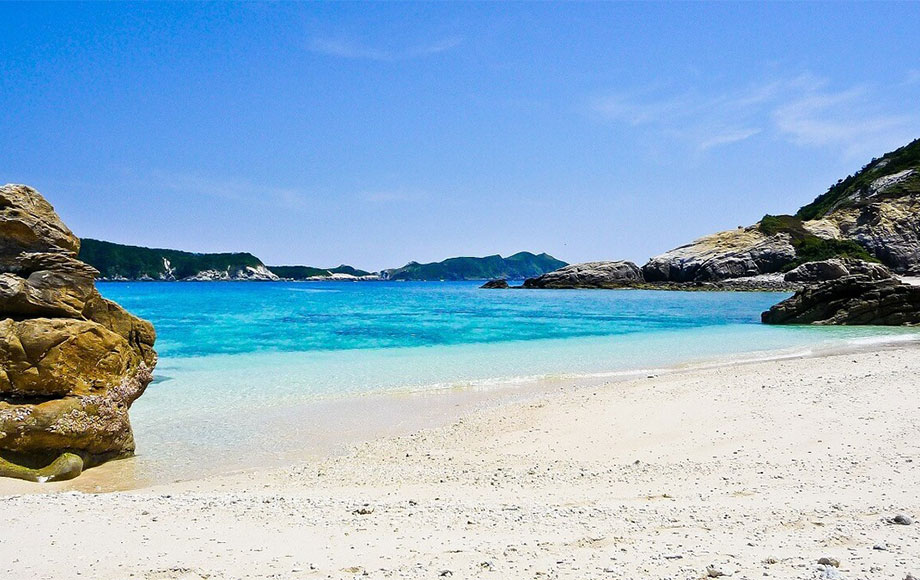Translating in English to ‘Northern Sea Circuit’, Hokkaido is Japan’s northernmost and least developed island, and a world away from the country’s more traditional and contemporary cites.
Bordered by the Sea of Japan, Okhotsk and the Pacific Ocean, Hokkaido’s rugged landscape features a mountainous centre, complete with volcanic plateau. The island is rightly famous for its volcanoes and hot springs. Kushiro, the largest wetland in Japan is also famous, as it is home to the Red-crowned Crane, one of the world’s largest and rarest cranes and an iconic symbol of Japan where it is also known as the ‘bird of happiness’.
During this semi circumnavigation of Hokkaido, the plan is to explore to the outlying Rebun and Rishiri Islands, venture into national parklands, observe wildlife and experience traditional cultures and the swathes of colourful flowers Hokkaido is renowned for.
The voyage also includes a day in South Korea’s Ulsan, visiting the fascinating UNESCO World Heritage Site Gyeongju – the ‘museum without walls’ . Other highlights include the incredible UNESCO registered Global Geopark Dogojima Island, world famous gardens, the serene lakes and forest of Juniko (12 Lakes) park. You will also observe wildlife and discover the fascinating art of Japanese paper making on a visit to the historic town of Matsue, with its impressive 17th Century castle.
Tour details
- Pre-cruise bullet train transfer and post-cruise transfer
- One night pre-cruise hotel accommodation (inc. dinner/breakfast)
- All on board ship accommodation with meals
- House beer, wine and soft drinks with lunch and dinner
- All expedition shore excursions and activities. Programme of lectures by noted naturalists
- Landing fees
- All items of a personal nature
- Laundry, drinks (other than mentioned)
- Gratuities
- International/domestic flights
- Visas and travel insurance
- Visit several beautiful castles including 17th century Matsue Castle
- Explore several of Japan’s beautiful national parks
- Discover some of Japan’s lesser visited sites, and breathtaking islands such as Rebun & Rishiri islands
- Wander through Kushiro, Japan’s largest wetland home to the Red-crowned Crane
- Marvel at Dogojima Island – a UNESCO registered Global Geopark
- Spend a day in the South Korean city of Ulsan
- Enjoy a visit to the UNESCO listed site Gyeongiu – the ‘museum without walls’
There are flights available to both Tokyo’s major international airports – Haneda and Narita – from Australia. Currently, Japan Airlines fly directly from Melbourne, while from Sydney, Qantas, All Nippon Air (ANA) and Japan Airlines all fly directly to Tokyo. Other major airlines that fly directly to Tokyo include Air France, British Airways, Emirates, Qatar, United, Air Canadas and Singapore Airlines.
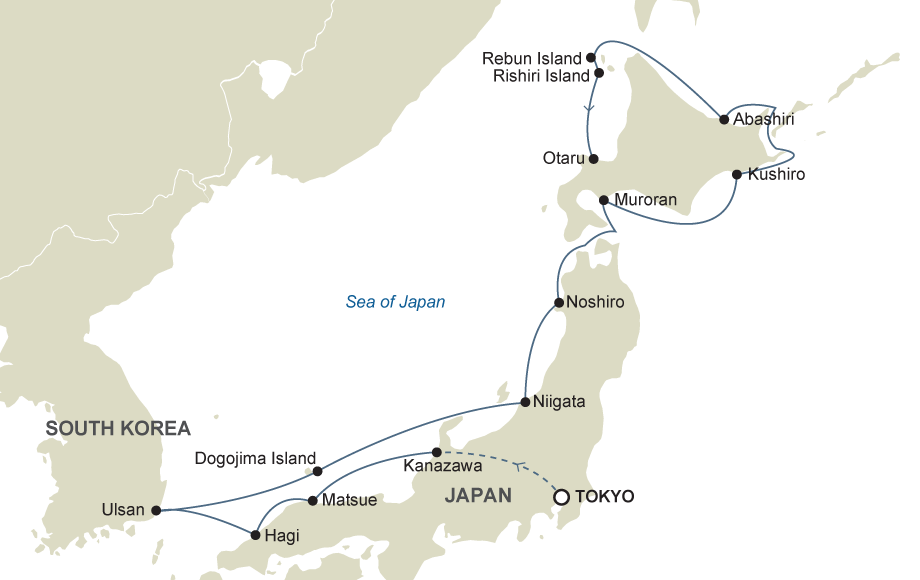
Itinerary
Beyond Japan’s National Parks
16 days/15 nights
Day 1
Tokyo
Arrive at Japan’s famed neon-lit capital Tokyo, where tradition meets ultra-modern and towering skyscrapers that sit alongside ancient temples. On arrival, transfer to your hotel where your group will spend the first night of the expedition. This evening meet your fellow voyagers and expedition guides over dinner at the hotel.
Day 2
Tokyo/Kanazawa
Enjoy breakfast at the hotel before travelling by Shinkansen ‘bullet train’, to Kanazawa. This afternoon you will board your ship, settle into your cabin and familiarise yourself with the vessel. You will have the opportunity to introduce yourself to your expedition team and learn about the voyage plans. Moor overnight.
Day 3
Kanazawa
There are two options today. Travellers can explore the historic mountain settlement and UNESECO World Heritage Site of Shirakawa-go, high in the remote mountains of the Shogawa River Valley in Hakusan National Park. Take in the sights on mountain walks and experience the unique cultural traditions including the region’s iconic Gassho-zukuri farmhouses, some of which are more than 250 years old, designed to withstand the heavy snow in winter and provide a large agricultural space for cultivating silkworms.
Alternatively explore the rich art centre of Kanazawa discovering some of the unique styles of Japanese art. Kanazawa is rightly famous for its Kutani-style pottery, exquisite lacquerware, gold-leaf workmanship, hand painted silk, and classical Noh dance-drama performed since the 14th century. Wander winding cobblestone streets, elegant restaurants, craft galleries and visit the impressive Edo-period Kenrokuen Garden, one of the Three Great Gardens of Japan, and explore the Omicho Market boasting everything from flowers, to crafts and food.
Day 4
Matsue
We set sail towards the port of Sakaiminato and the entry point to Matsue, known as ‘the town of water’ due to being situated between Lake Shinji and Lake Nakaumi. A highlight of your visit will be the Matsue Castle, a national treasure and one of Japan’s few largely intact 17th century castles. Other options today may include exploring Daisen-Oki National Park, steeped in beauty and history it’s also the home of rare flora and fauna including the giant salamander; visiting the picturesque Yuushien Garden, the Adachi Museum of Art, learning about the art of Japanese paper making at the Yakumo-mura village, or perhaps you may wish to spend some time exploring the picturesque streets and local canals.
Day 5
Hagi
Relax on board as the vessel sails south to Hagi, originally a minor fishing port, the town is now famously known for its traditional pottery making, which you will have a chance to learn about. You will also have the opportunity to discover the Teramachi District with its temples and shrines, including the famed ‘Ninja Temple’, the Jokomachi District with its old Samurai houses, Hagi Castle ruins at Shizuki Park, and beautiful Zen Tokoji Temple.
Day 6
Ulsan, South Korea
Today, cross the Sea of Japan to Ulsan in South Korea where the plan is to visit the UNESCO World Heritage Site of Gyeongju. The capital of the Shilla Dynasty and dating back to the first millennium, Gyeongju is known as ’the museum without walls’ and is full of ancient Korean history and Buddhist culture. Enjoy strolling through hundreds of excavated monuments, temples, tombs and pagodas and enjoy Korean delicacies, cultural performances, and visit the National Museum with its gold jewellery, metal weapons, and distinctive pottery. Today provides a perfect taste of South Korea.
Day 7
Dogojima Island
Picturesque and otherworldly, Dogojima Island is the largest of the Oki Islands in the Sea of Japan and part of the Daisen-Oki National Park and a UNESCO registered Global Geopark. Accordingly it is home to some outstanding coastal and interior scenery to explore. Discover a rarely visited corner of Japan, with its clear water beaches, bays, inlets and coves, impressive towering cliffs and rock formations eroded by the elements to the dense forests and steep mountains, including Mt Daimanji which rises more than 600-metres above sea-level.
Day 8
At Sea
Spend today at sea en route to Niigata, there is time to unwind after the adventures of Dogojima Island. Look for cetaceans and sea birds, join a lecture or catch up on your photos or journaling.
Day 9
Nigata
Today sees you visit the bustling port town of Niigata, famous for snow, rice, sake, hot springs and the six-arched, granite-sided stone Bandai Bridge, designated as an Important Cultural Property in 2004, and one of the most scenic spots in the city. Highlights here include Bandai Asahi National Park, Japan’s second largest national park, combining stunning volcanic scenery and hot springs with lush forests, verdant highlands crisscrossed with walking trails and home to Asiatic black bears, squirrels, foxes, and migratory birds. Elsewhere Takada Castle Site Park, with it 3-storey castle from the Edo Period, offers panoramic views of the Takada Plain, while the 193 hectares of Fukushimagata Wetlands is home to endangered flora and fauna, including the rarely seen gigantic lotus Euryale Ferox, and listed on Japan’s 100 greatest natural environments.
Day 10
Noshiro
Famous for its local beef, pork and chicken and rice soup known as Kiritanpo, tranquil Noshiro is a modern city flanked by nature with the Yoneshiro River winding through its heart. Gateway to the iconic Juniko (12 Lakes) park, this national treasure is actually a collection of 33 crystal-clear ponds and lakes formed by an earthquake in 1704 and surrounded by ancient beech forest. Here you will have the option to explore the forested walks that lead to these serene blue holes including 10-metre deep Aoike (Blue Pond). Other options may include visiting stunning Lake Towada, a 2,000 year old double caldera 400 metres above sea level, and its surrounding forest in Towada Hachimantai National Park and Japan’s largest pine forest, Kaze no Matsubara, where more than 7 million trees were planted to prevent coastal erosion. Known as the ‘Wind of Matsubara’, in 1996 it was designated as one of the 100 Soundscapes of Japan.
Day 11
Muroran
Adventures abound at Shikotsu-Toya National Park, named after its famous twin caldera lakes. Another picturesque natural hot spot, the park’s spectacular scenery including its impressive lakes, hot springs and volcanic wonderland, are all easily accessible and offer multiple hiking and walking options. Activities here could include riding the cable car to the top of Mount Usu to take in the grand scale views over Lake Toya or visiting the geothermal spectacle of steaming vents and sulphurous streams at Jigokudani aka ‘Hell Valley’. This afternoon enjoy free time to explore Muroran at your leisure, visit the scenic cape and lighthouse or take in the city from above with a walk up Mount Sokuryo.
Day 12
Kushiro
Major fishing port city Kushiro is rightly famous for Kushiro Shitsugen, Japan’s largest marshland and national park home to the country’s sacred Red-crowned Cranes (tancho). Once thought to be extinct, a flock of 20 birds were discovered here in 1926; despite numbers now reaching almost 2,000 individuals, the cranes’ status remains endangered due to the shrinking of its wetland habitat. Exploring the marshland’s walking trails you may see the cranes in their natural habitat before visiting the Kushiro Crane Reserve to learn about its breeding program and rehabilitation centre for sick and injured birds. This afternoon explore the architecturally striking Kushiro City Museum. Equally fascinating inside, discover Kushiro’s natural history and beauty of the indigenous Ainu culture.
Days 13/14
Abashiri
This morning position yourself on the Observation Deck or in the Observation Lounge to enjoy views of the coastline and look for wildlife as the vessel sails through the Nemuro Channel and around the Shiretoko Peninsula to Abashiri. This afternoon the plan is to visit Lake Kussharo, a stunning tree-lined caldera lake, the largest in Akan Mashu National Park with a circumference of 57 kilometres. During your time here the plan is to also visit Higashimokoto Shibazakura Park and its 10 hectares of flowering fields which turn vivid pink from May to early June during the park’s annual Shibazakura Festival.
Day 15
Rebun & Rishiri Islands
Also known as Japan’s ‘island of flowers’, the plan is to explore Rebun Island, a scenic isle off the northwest tip of Hokkaido and treasure trove of natural beauty. This tiny island is famous for its rich flora, including many alpine flowers not found anywhere else in the world which carpet the island from late April to mid-September. Hopefully, there will be several opportunities to explore the floral splendour along the coastline which also offers excellent views over the surrounding crystal clear waters, Rishiri Volcano and the rugged beauty of Cape Gorota. This afternoon explore neighbouring Rishiri Island where the skyline is dominated by the dormant volcano of Mount Rishiri climbing to 1,721 metres. Whilst on the island, you may enjoy a walk around man-made Himenuma Pond listening to the birdlife and taking in majestic Mount Rishiri or Kutsugata Cape Park where the hope is to see Japan’s famed Black Woodpecker and Long-tailed Tit exploring the forest walks. There will also be free time to venture into the town or visit the hot springs.
Day 16
Otaru, Tour ends.
This morning, arrive in Otaru, a port city in Hokkaido known for glassworks, music boxes, sake distilleries and the picturesque Otaru Canal flanked with shops and cafes built within repurposed 1920s warehouses. After breakfast there will be a complimentary coach transfer to a central hotel or to New Chitose/Sapporo Airport.
Please note: To allow time for disembarkation procedures and travel from Otaru, it is not recommended to book flights departing before 1300 hours.
Please note: During the voyage, circumstances may make it necessary or desirable to deviate from the proposed itinerary. This can include poor weather and opportunities for making unplanned excursions. Your Expedition Leader will keep you fully informed. Please note: Voyages are planned and scheduled pending final regulatory approval.
Heritage Adventurer
Built in 1991 for Polar expedition travel, the Heritage Adventurer (formerly the MS Hanseatic) holds the highest passenger-ship ice-class rating (1A Super). Originally designed to accommodate 184 guests, this world-class polar pioneer now welcomes just 140 passengers, creating a more spacious, comfortable and personalised onboard experience. Facilities include superb indoor and outdoor viewing locations including the Observation Lounge (with 270-degree views), a library, pool, gym, hot tub and steam room. Guests can relax in their comfortable cabins that span 4 decks or meet up with fellow guests in the café or bar. Accompanying each voyage is a world-renowned team of naturalists, botanists, historians and experts as well as a fleet of 14 Zodiacs. The vessel also has an Open Bridge Policy.
- Classification: Lloyds 1AS, GL E4
- Year built: 1991
- Accommodation: 140 guests
- Shipyard: Rauma, Finland
- Engines: 3,940 horsepower (x2)
- Maximum speed: 15 knots
- Cruising speed: 12 knots
- Range: 8,600 nautical miles
- Gross Tonnage: 8,378gt
- Length: 124 metres
- Zodiacs: 14
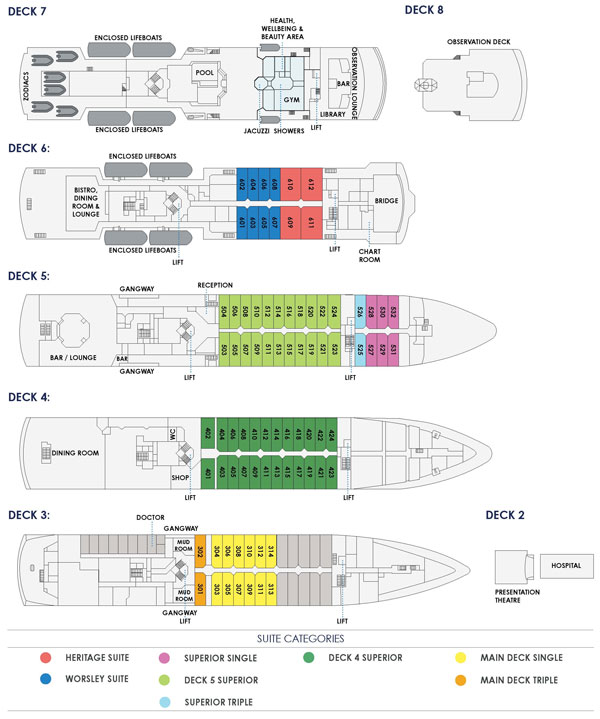
More Japan Itineraries
Subscribe below
Sign up to receive updates about exciting journeys, special offers and more.
